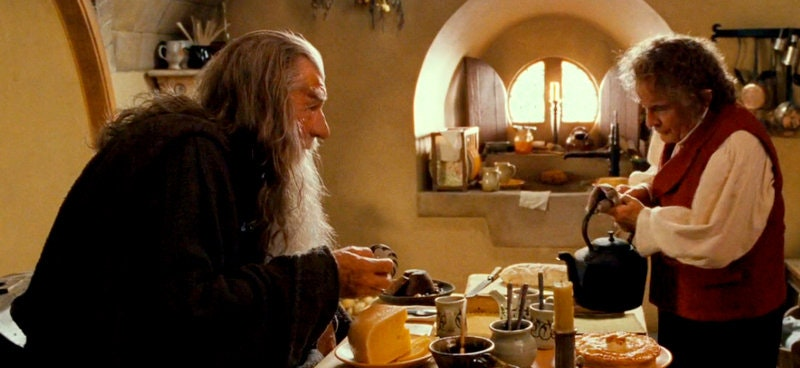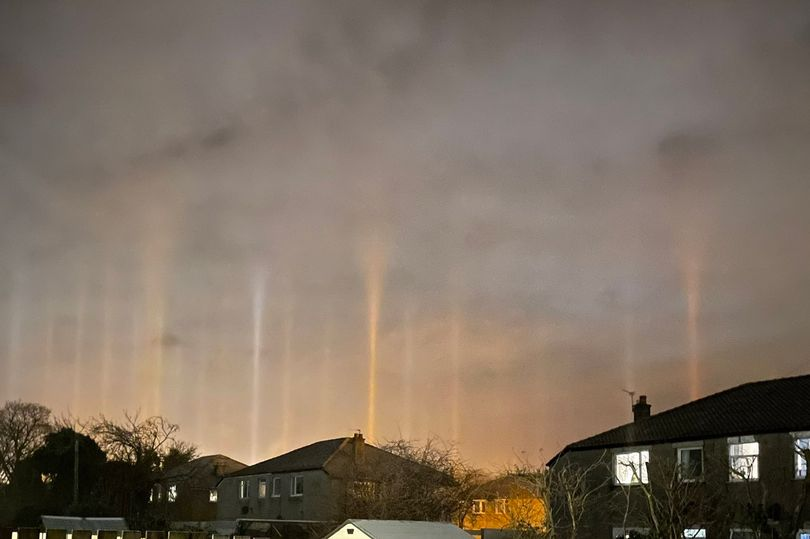
With the best illusions, you can know how they're done and yet your mind's still immediately flummoxed.
This is my favourite. Those table legs? Impossible - but absolutely real. (This is a *photo*.)
An appreciation 🧵for the oldest trick in the book:
1/
This is my favourite. Those table legs? Impossible - but absolutely real. (This is a *photo*.)
An appreciation 🧵for the oldest trick in the book:
1/

Here is Professor Brian Cox CBE OBE (far right of pic) in his former p/t job (1986-1992).
I post this to illustrate that scientists still have *all sorts* of backgrounds, including in the Arts...
(And maybe also because this photo is amazing. Which it certainly is.)
2/
I post this to illustrate that scientists still have *all sorts* of backgrounds, including in the Arts...
(And maybe also because this photo is amazing. Which it certainly is.)
2/

In the case of Adelbert Ames Jr. (born 1880), he started by studying & practicing law - then chucked it all in to try his hand at painting.
Along the way, he developed a passion for light & colour & how the human mind processes them - and ended up a professor of research.
3/
Along the way, he developed a passion for light & colour & how the human mind processes them - and ended up a professor of research.
3/

Take Augusta Ada King, Countess of Lovelace, born 1815, who has a solid claim to being the world's first computer programmer.
She was a visionary, she hobnobbed with the greatest minds of her age (being one herself) - & she crammed an astonishing amount into her 36 years.
4/
She was a visionary, she hobnobbed with the greatest minds of her age (being one herself) - & she crammed an astonishing amount into her 36 years.
4/

But no. I typed "scientist" into Google and the very first image result was labelled "Mad Scientist Pictures", featuring an old white bloke with barmy hair. The stereotype is hard to kill, even now.
Sigh.
(The other images were more encouraging, though.)
5/
Sigh.
(The other images were more encouraging, though.)
5/

Returning to Ames: outside of physiological optics, his most famous work is a type of room where impossible things happen.
You've seen it used dozens, maybe hundreds of times.
It works on you every time - & it always will.
6/
You've seen it used dozens, maybe hundreds of times.
It works on you every time - & it always will.
6/

Here's illusionist Zach King showing it in action at the start of this video:
(The rest of the video is a mix of practical & digital effects - but the Ames room is 100% practical. No expensive CGI needed.)
7/
(The rest of the video is a mix of practical & digital effects - but the Ames room is 100% practical. No expensive CGI needed.)
7/
I won't go too far into the details. If you're interested, there's more in the newsletter I just wrote on all this:
everythingisamazing.substack.com/p/the-room-wit…
My main point: you can *build* this illusion. So it's a cheap, effective option for filmmakers.
And it always works.
8/
everythingisamazing.substack.com/p/the-room-wit…
My main point: you can *build* this illusion. So it's a cheap, effective option for filmmakers.
And it always works.
8/

Any illusion where you fully understand how it works but your senses are immediately fooled nevertheless is...a hell of a head-scratcher.
There's one near me, here in Scotland: a hillside where your car seems to defy gravity:
(v. @atlasobscura)
9/
There's one near me, here in Scotland: a hillside where your car seems to defy gravity:
(v. @atlasobscura)
9/
And that's the case with the Ames Table, placed here in the Ames Room.
The table's perfectly normal. But since the rookm isn't, it throws your sense of apparent reality right out the window.
And speaking of windows...
10/
The table's perfectly normal. But since the rookm isn't, it throws your sense of apparent reality right out the window.
And speaking of windows...
10/

This is the Ames Window - a forced-perspective trapezoid that parts of our mind immediately want to interpret as something more recognisable...
This leads to the most incredible illusion I've ever seen, which ties your perception in knots. (Hope that's you warned.)
Ready?
11/
This leads to the most incredible illusion I've ever seen, which ties your perception in knots. (Hope that's you warned.)
Ready?
11/

Big hat-tip to @Rainmaker1973 for first making me aware of this video clip from the 1970s.
The end is absolutely astonishing.
12/
The end is absolutely astonishing.
https://twitter.com/rainmaker1973/status/1479804794701238277
12/
OK, this coffee-shop's closing so I have to scarper.
If you like nerding out on optical & visual illusions, I have a whole season of my newsletter on 'em. Start here!
everythingisamazing.substack.com/p/the-room-wit…
Ta for reading. 🙂
If you like nerding out on optical & visual illusions, I have a whole season of my newsletter on 'em. Start here!
everythingisamazing.substack.com/p/the-room-wit…
Ta for reading. 🙂
Update:
I may have written about the least interesting person here. Here's a profile of Blanche Ames, sister of Adelbert, which starts with this arresting scene:
harvardmagazine.com/2017/07/blanch…
(h/t Fiona Leonard)
cc @unrulyfigures
I may have written about the least interesting person here. Here's a profile of Blanche Ames, sister of Adelbert, which starts with this arresting scene:
harvardmagazine.com/2017/07/blanch…
(h/t Fiona Leonard)
cc @unrulyfigures

@unrulyfigures @TheValorieClark The more I read about Blanche Ames, the more I feel this is a story you'd fall for:
"Ames serves as...a template of how an elite woman chose to become publicly involved in issues she might have funded others to pursue..."
scholarworks.umass.edu/cgi/viewconten…
"Ames serves as...a template of how an elite woman chose to become publicly involved in issues she might have funded others to pursue..."
scholarworks.umass.edu/cgi/viewconten…
• • •
Missing some Tweet in this thread? You can try to
force a refresh



















